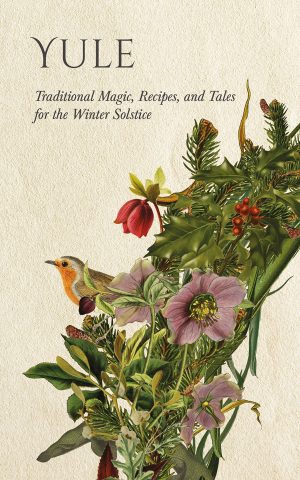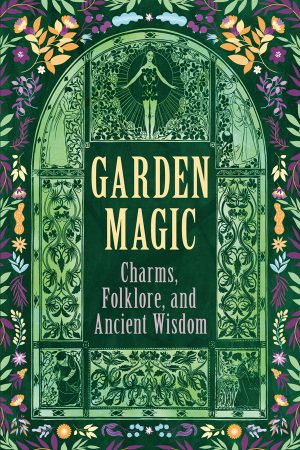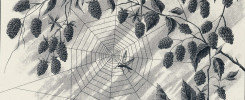Here in the Northern Hemisphere, as the days grow shorter and the nights grow colder, we find ourselves on the edge of one of the most magical and sacred times of the year, the Winter Solstice.
Also known as Yule, this Sabbat has been celebrated for thousands of years. Taking place on the 21st December, this spiritual day is one of promise, it announces the rebirth of the Sun and marks the moment our nights start to shorten once more.
Today, Yule is celebrated by witches, pagans, and nature-focused spiritualists as one of the eight Sabbats on the Wheel of the Year. It remains a celebration of the rebirth of the Sun, of light overcoming darkness, and of the deep wisdom that Winter offers us, a reminder to slow down, to reflect, and to renew.
Traditional Magic, Recipes, and Tales for the Winter Solstice
A magical guide to the most festive Sabbat celebration, Yule. Gather in the heart of Winter and explore the ancient traditions and practices Yuletide has to offer as we honour the rebirth of the Sun.
Symbols and Correspondences of Yule
Colours: White, Red, Green, Blue, Gold, Silver
Crystals: Snow Quartz, Garnet, Bloodstone, Clear Quartz, Ruby
Incense: Pine, Peppermint, Myrrh, Cedar, Cinnamon, Clove
Altar Offerings: Yule Log, Evergreen Wreath, Sun Symbols
Plants and Herbs: Holly, Ivy, Mistletoe, Poinsettia
Deities: Odin, the Green Man, Frigga
Food: Gingerbread, Mulled Wine, Root Veggies, Spiced Cakes
Origins and Traditions of Yule
Rooted in the ancient pagan traditions of Northern Europe, Yule was traditionally a festival honouring the Winter Solstice, the longest night of the year. For our ancestors, this was a sacred night, when the Sun paused before returning with renewed strength. A time to honour the gods and spirits, to light fires, feast, and welcome back the light, communities like the Norse pagans, Celts, and Druids, marked this night with bonfires, mistletoe, and evergreens, symbols of resilience and hope.
As Christianity spread, many of Yule’s symbols and practices were woven into Christmas celebrations. But at its heart, the Sabbat remains a time to honour the cycles of the Earth, to find strength in darkness, and to celebrate life’s quiet, enduring magic.
Norse and Germanic Traditions
Yule originates from the ancient Germanic and Norse traditions, where it was known as Jól or Jule. In the lands of Scandinavia and Germany, where Winters are long and harsh, it represented the promise of survival and the rebirth of the Sun. It typically spanned several days and nights, beginning around the Winter Solstice. This was a time when communities would come together to share food, warmth, and tales of courage and faith.
Yule was more than just a time to celebrate, it was a way to honour the cycles of nature and the turning of the Great Wheel, or the Wheel of the Year. Bonfires were lit, symbolising the return of light, and animals were often sacrificed to appease the gods and ensure a bountiful season ahead. The traditions of the Yule log and evergreens emerged from this practice, with each log representing protection, warmth, and longevity.
The Influence of Norse Mythology
One of the most intriguing origins of Yule comes from Norse mythology, where Odin, the All-Father, was believed to ride the skies on his eight-legged horse, Sleipnir, leading the Wild Hunt. This was a ghostly procession of spirits, gods, and mystical beings, who swept through the night sky as the Solstice approached, symbolising a liminal time when the veil between the worlds of the living and the dead thinned.
During this period, people would leave offerings for Odin and his entourage, hoping for protection and blessings. Many historians believe that elements of this myth later inspired the tradition of Father Christmas, with Odin’s spectral ride morphing into the image of a gift-bringer in Winter.
Read more about Odin and the origins of Father Christmas on our Substack.
Celtic and Druidic Traditions
For the ancient Celts and Druids, Yule was also a time of intense spiritual focus and natural reverence. To them, the Winter Solstice marked the rebirth of the Sun God or the ‘Oak King’, who had triumphed over the ‘Holly King’, his twin and darker half. This symbolic battle between the Oak and Holly Kings represented the endless cycle of growth and decay, of life and death.
In these traditions, Druids would gather sacred mistletoe, a plant symbolising fertility and life, from the ancient oaks. Oak trees, seen as a bridge between worlds, were highly revered, as they remained strong and tall through the Winter. Evergreens like holly and ivy adorned their altars and homes to signify life’s resilience, even in the darkest season.
Discover more about nature’s magic at the Winter Solstice in our book of garden spells and wisdom…
An ideal gardening companion, Garden Magic will help you reconnect with the power of nature. With guidance on sowing, propagating, and harvesting, including everything from practical advice and growing tips to incantations and spells.
Roman Influence
Another key influence on the Sabbat was the Roman festival of Saturnalia, celebrated in honour of Saturn, the god of agriculture and time. Saturnalia was marked by feasts, games, and a temporary suspension of the social order, with servants becoming masters and vice versa. It was a time of joy, renewal, and the sharing of light through candles, much like Yule’s traditional bonfires.
As the Roman Empire expanded, Saturnalia blended with various Yule traditions. This cultural exchange was a significant factor in the spread of Yule-like celebrations across Europe and the subsequent integration of these traditions into early Christian celebrations.
Christianity and the Transformation of Yule into Christmas
As Christianity spread throughout Europe, many Yule traditions were absorbed into the celebration of Christmas. Early Christian missionaries, seeking to convert pagans, often adopted local customs to make Christianity more accessible. Yule traditions such as the use of evergreens, gift-giving, and lighting candles to celebrate the return of the Sun were reinterpreted to celebrate the birth of Christ, the ‘Light of the World’.
Despite these changes, the essence of Yule endured, particularly among communities who continued to practice folk traditions or who later revived pagan spirituality as part of the modern witchcraft and neopagan movements.
Yule’s Legacy
In a slow but steady movement towards lighter and longer days, Yule is a profound reminder of life’s cycles and the reassurance of light after darkness. The symbols and rituals of Yule have carried through time because they resonate deeply with the natural world. In honouring Yule, we connect with the ancient wisdom that light always returns, and that life, even in its most challenging cycles, continues to move forward.
At Wyrd Books, we celebrate this powerful Sabbat as a reminder of our connection to the past, to the Earth, and to the enduring rhythms of nature. As you light a candle this Yule, or adorn your home with evergreen decorations, remember that you’re taking part in a tradition as old as time, one that countless ancestors honoured in hopes of brighter days. May this Yule season bring you warmth, light, and a rekindled spirit.





